
In this case study, I will describe how I led a cross-functional team to uncover, explore, and figure out how we identified the most desirable features Verizon customers wanted. Afterward, I will cover one of those features end-to-end.
A project like this comes with history and old artifacts. The landscape around Verizon has changed, and so have their customers' behaviors. The team consists of myself and another lead from design, two product owners, a content team, and an outside agency mirroring our structure.
I led the project's day-to-day tasks while the other design lead worked behind the scenes lining up support for our effort.
To kick off the project, the leads and I asked our agency partners to create a list of documents. Over a month, the other leaders and I reviewed each slide and modified it. With the help of our agency colleagues, we wrote up research briefs, and I scheduled each research area with our in-house team.

A Kano study would provide the actionable insight needed to outline a plan. Working with our agency partners and leads, I defined the initial set of features we would include, and others aided with their suggestions.
For more insight, I invited SMEs and product owners to review and refine some of the explanations so they would be correct when the researchers needed to explain features.

In all, the list contained thirty-one features that felt right. I removed several features due to their complexity and security risks.
Based on our findings from the Kano study, three categories helped the team identify feature priorities.
Basic needs
Delighters
Satisfiers

Around the same time, my co-lead and I started to interview our partners across product, design, and SMEs and split their thoughts into an affinity board. We grouped similar sentiments to build a holistic view of strategies and business goals.

I led two workshops with the help of our agency with all the project leads to break down and explain the business goals and discuss the opportunities from the six stakeholders interviewed.
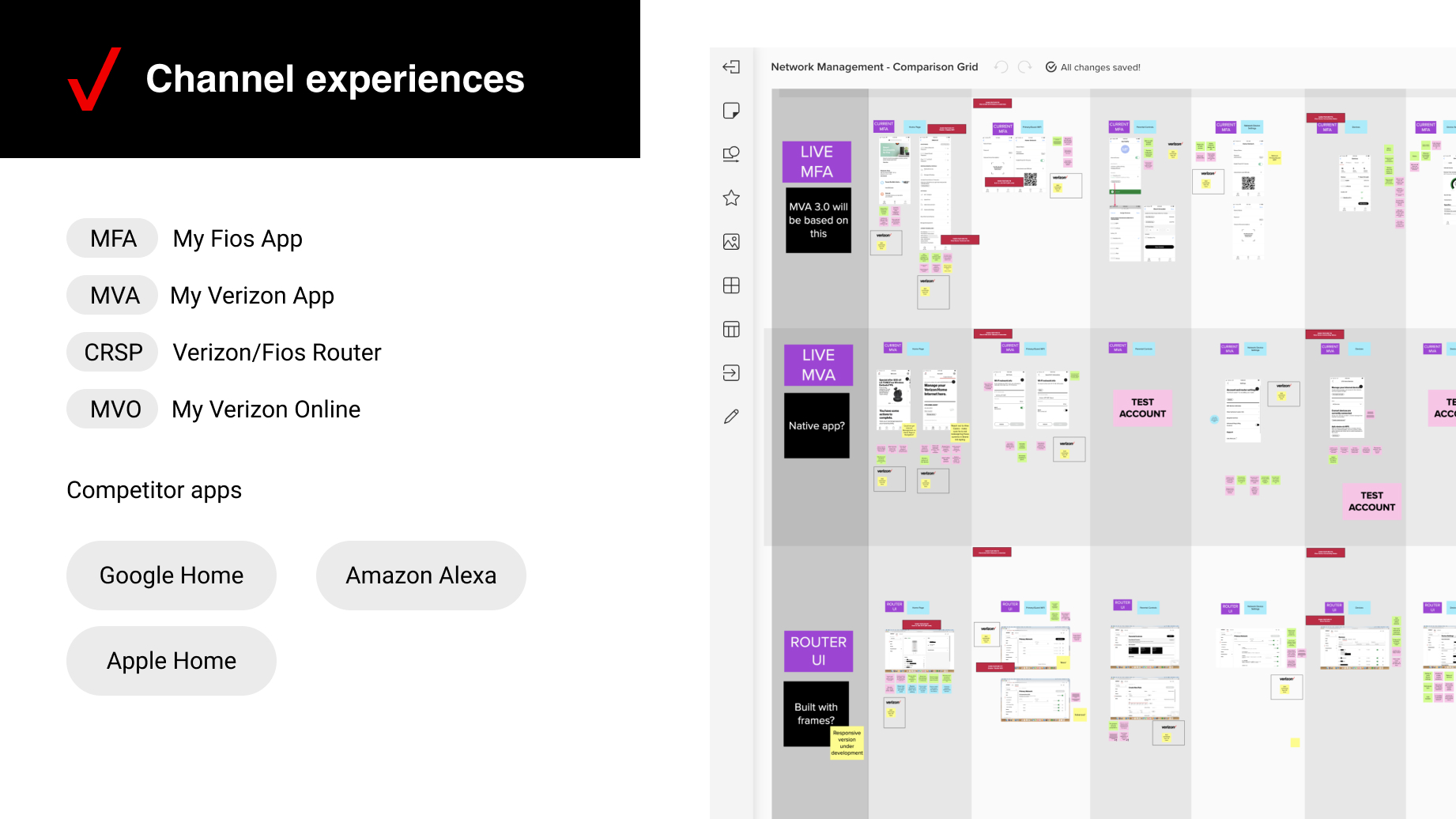
The team and I needed a comprehensive competitor analysis building on the initial one used to sell this idea to our senior leadership. In a few ideation sessions, I led the team, and we broke down everything we liked about what our competition was doing and then compared them to what we had across Verizon's experiences.
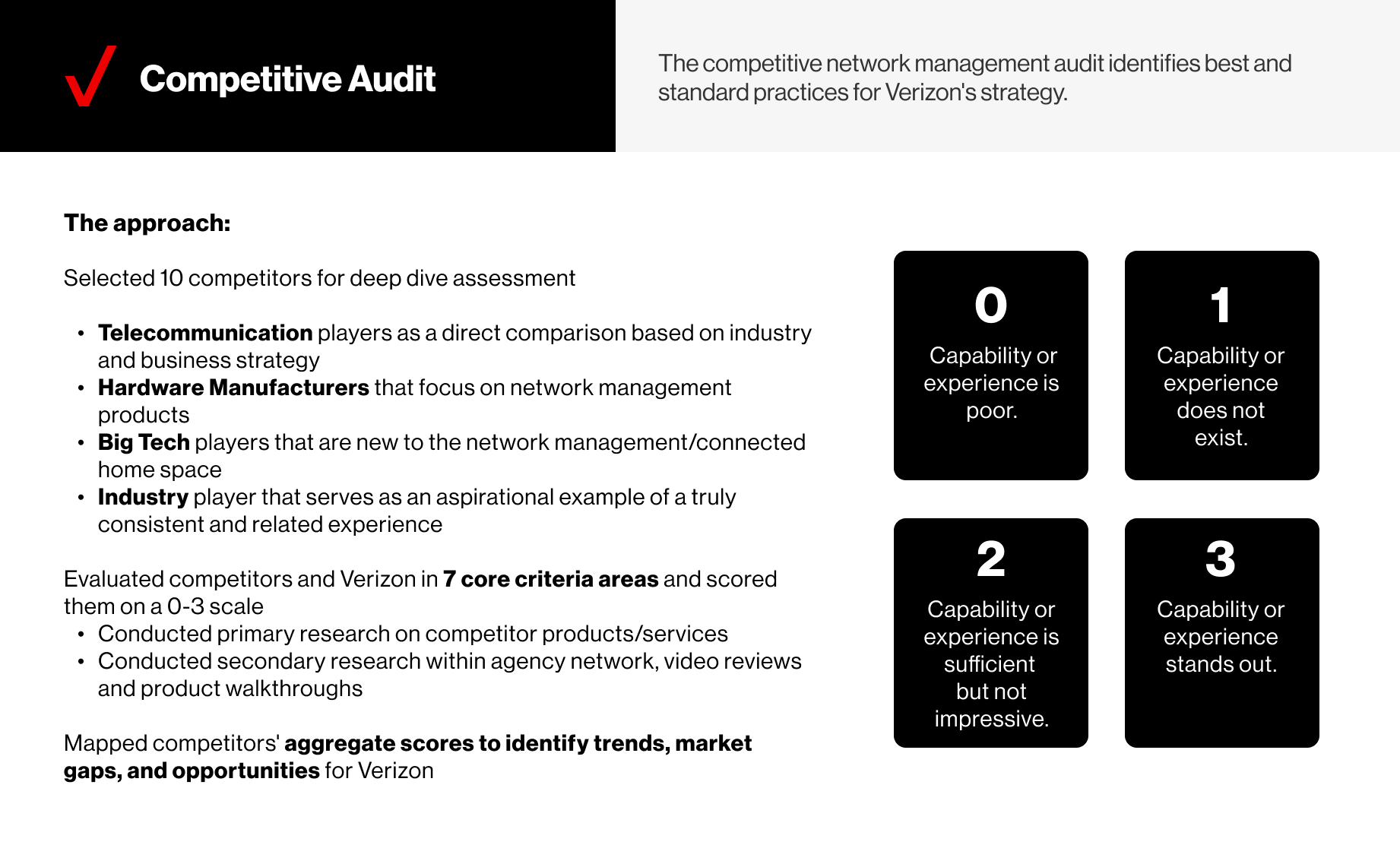
A significant constraint was time and the ability to deliver by October. I led an effort to devise a plan that allowed us enough time to ideate, wireframe, research, design, iterate, and maybe test again, write stories and turn over to our development partners for each feature. Thanks to our agency partners who refined a plan consisting of Six-week sprints, two weeks for each discipline, for a set of features.
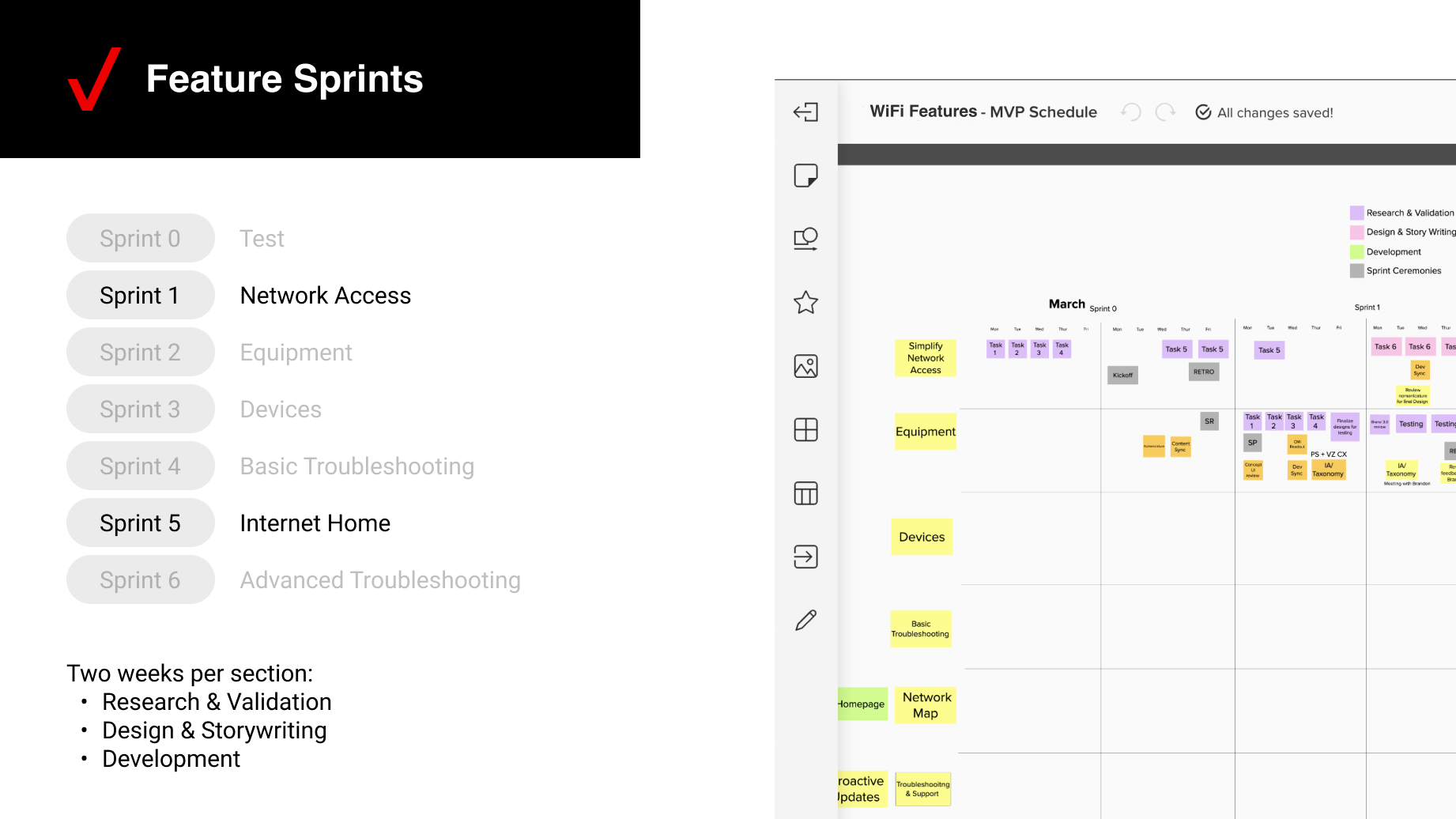
The project manager and I set up Sprint 0 ceremonies and meeting cadences for our team. As the group progressed through each six-week Sprint block, schedule adjustments were made. We eliminated 30% of the initial meetings and converted some into working sessions.
Noteworthy
Share Wi-Fi has a different experience that is router-dependent. For almost half of Verizon's seven million customer base, they get a QR code as an option to share a Wi-Fi password with friends or family. The other half receives the QR and a share button for SMS and email. In each experience, a customer has to go to page four (level) or more in-depth in the app.
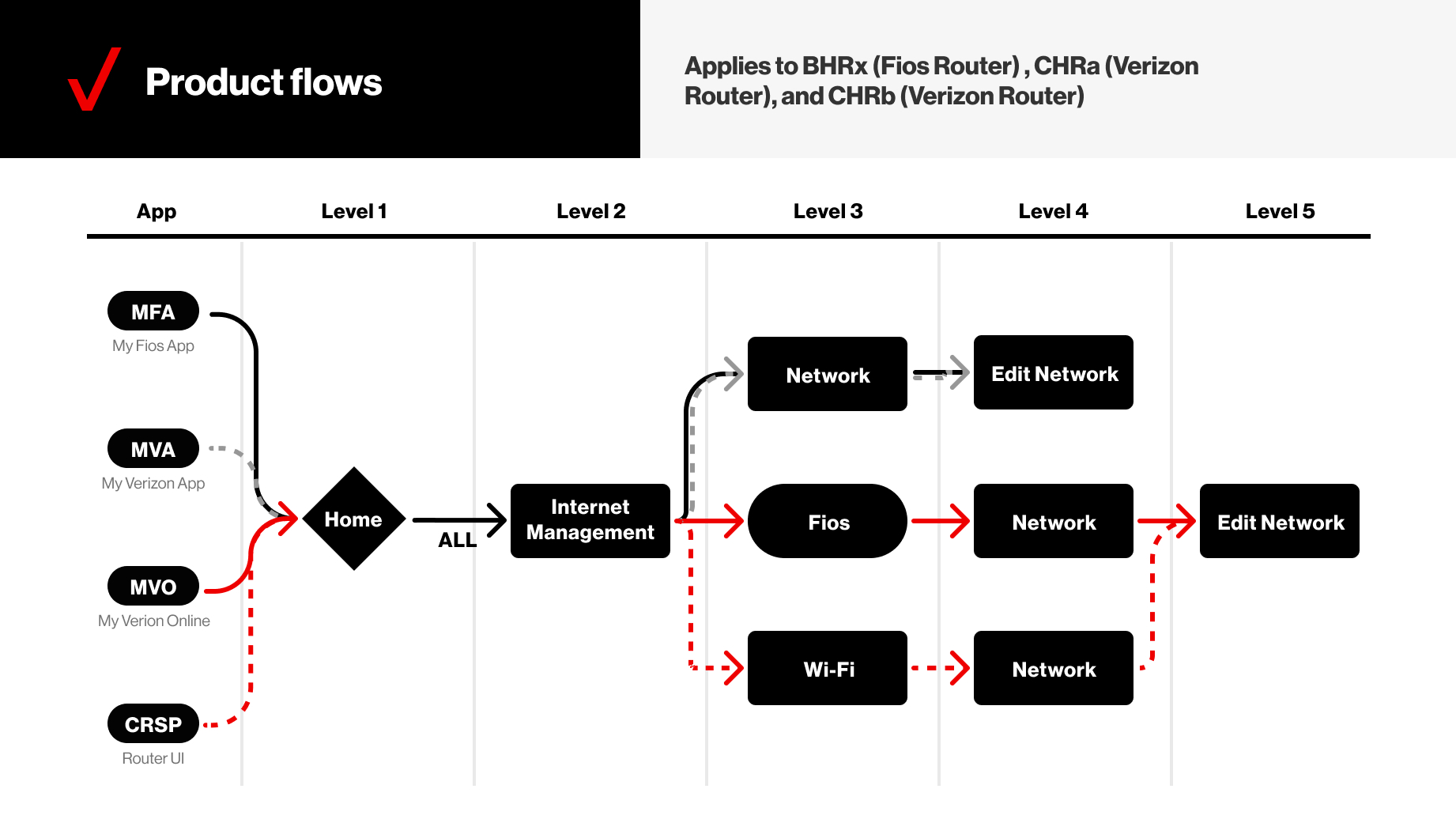
The strategy is to make sharing Wi-Fi access across all of Verizon's products easy and not segment access depending on your hardware.
Noteworthy
Kano Study
Goal
Based on user persona research and the Kano Study, the design's direction was clear: customers had difficulty sharing their Wi-Fi. To make that easier, I asked the design team to define each screen within the flow, and I and the other leads reviewed each page until we had a flow that felt right.

Validate current design use and understanding
Identify potential design improvements
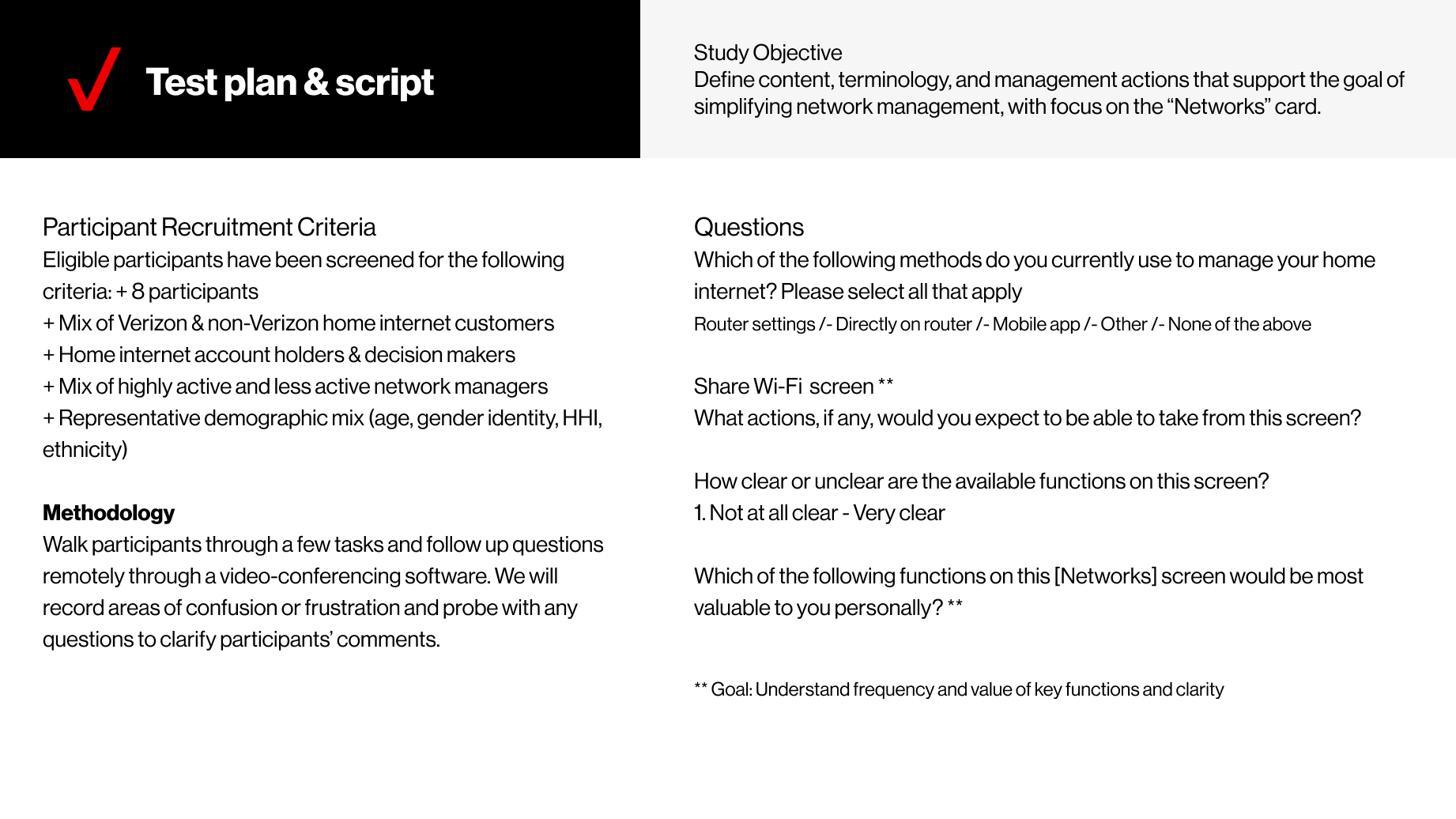
Key takeaway
Using all of the research as a foundation, I worked with the visual designers from our agency to establish a look and feel using Verizon's design system components. I helped them create new components that we submitted to our brand team, which gave our designs a unique feel and simplicity that made it easy for Verizon's customers to share their Wi-Fi passwords with friends and family.

Leading an effort to holistically change an organization's core structure by surfing value-driven experiences identified by the research is a monumental task, responsibility, and opportunity.
The strategy to pull this off has many authors, and I could not have done it alone. From our organization partners, agency friends, senior leadership, and finally, my co-lead, who won over the support we needed to get this opportunity, thank you.
There is more to come as this project is only halfway completed. In the following months, all of the work will be released, and our customers will be able to find and manage their network easily.
Outcome